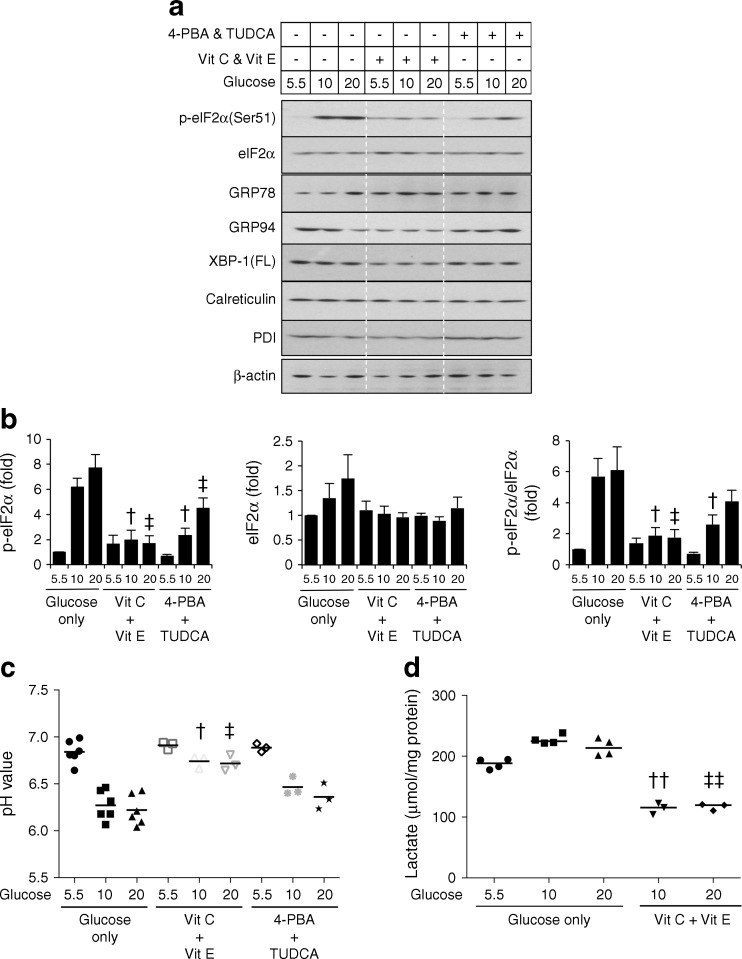Fig. 3.
Both chemical chaperones and antioxidants effectively suppress high glucose-induced ER stress, but only antioxidants reduce the degree of metabolic acidosis. BeWo-NG cells were treated with different concentrations of glucose in the presence of either chemical chaperones, 4-PBA (500 μmol/l) and TUDCA (250 μmol/l), or vitamin C (Vit C; 500 μmol/l) or vitamin E (Vit E; 500 μmol/l) for 24 h. (a) Levels of ER stress markers were determined by western blotting. β-actin was used as loading control. (b) Phosphorylation status is presented as the ratio between phosphorylated and total protein. Data are presented as mean ± SEM, n = 3. The y-axis shows the relative level of p-eIF2α eIF2α or the ratio of p-eIF2α/eIF2α. (c) pH of the culture media after the experiment. (d) Effect of vitamins on high glucose-induced lactate production. Data are presented as median, n = 3–6. † p < 0.05 and †† p < 0.01 vs 10 mmol/l glucose in the glucose-only control group; ‡ p < 0.05 and ‡‡ p < 0.01 vs 20 mmol/l glucose in the glucose-only control group

